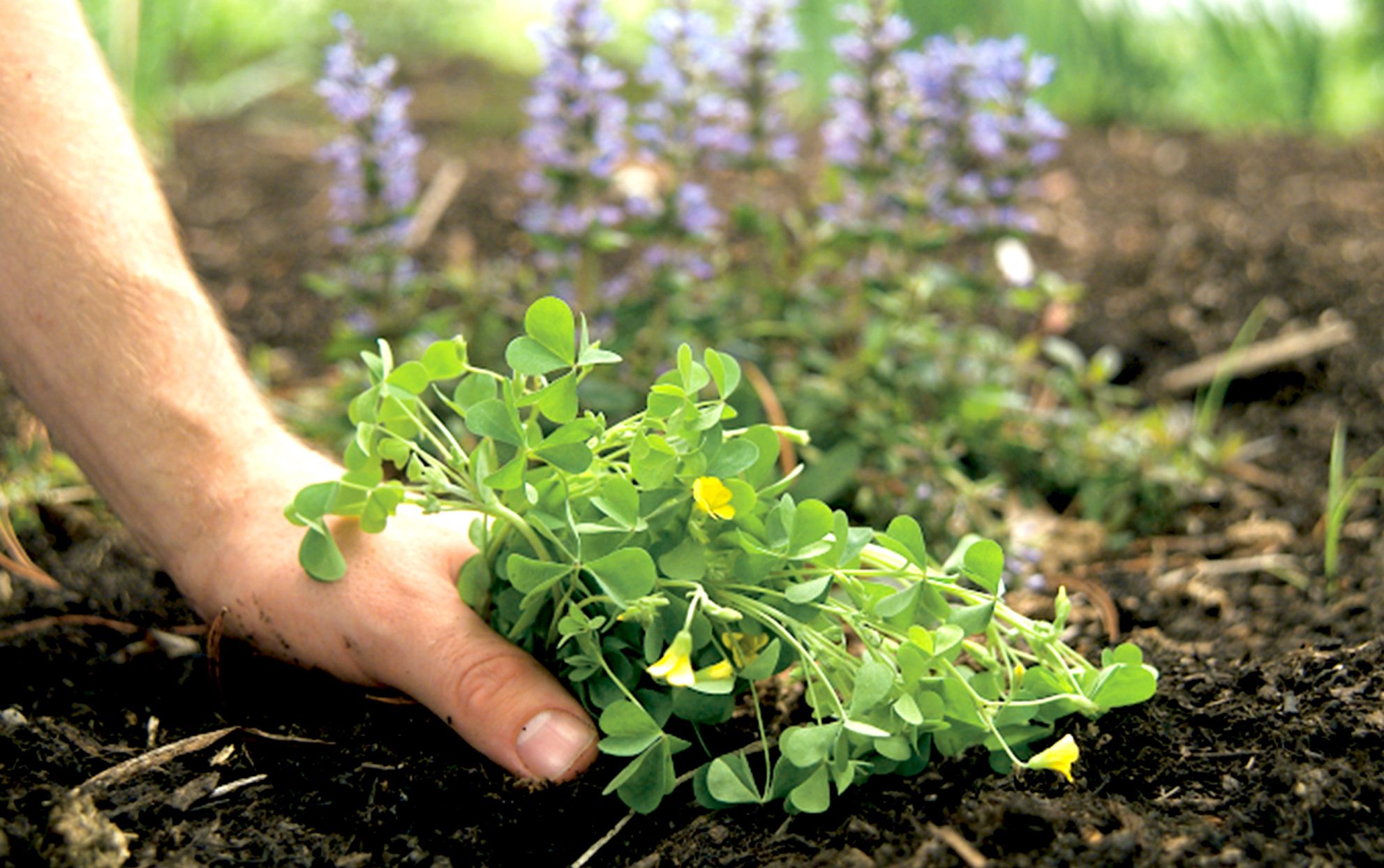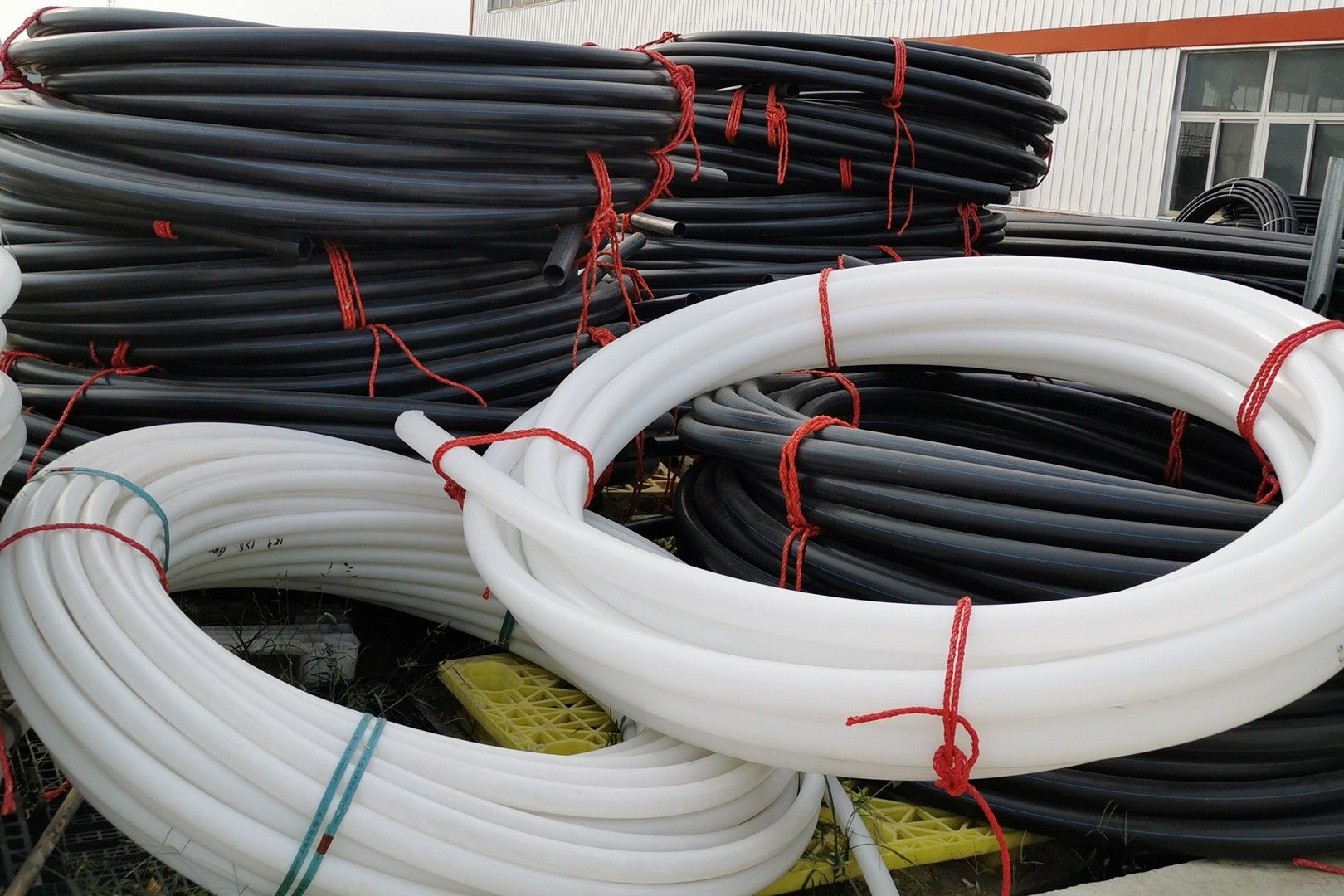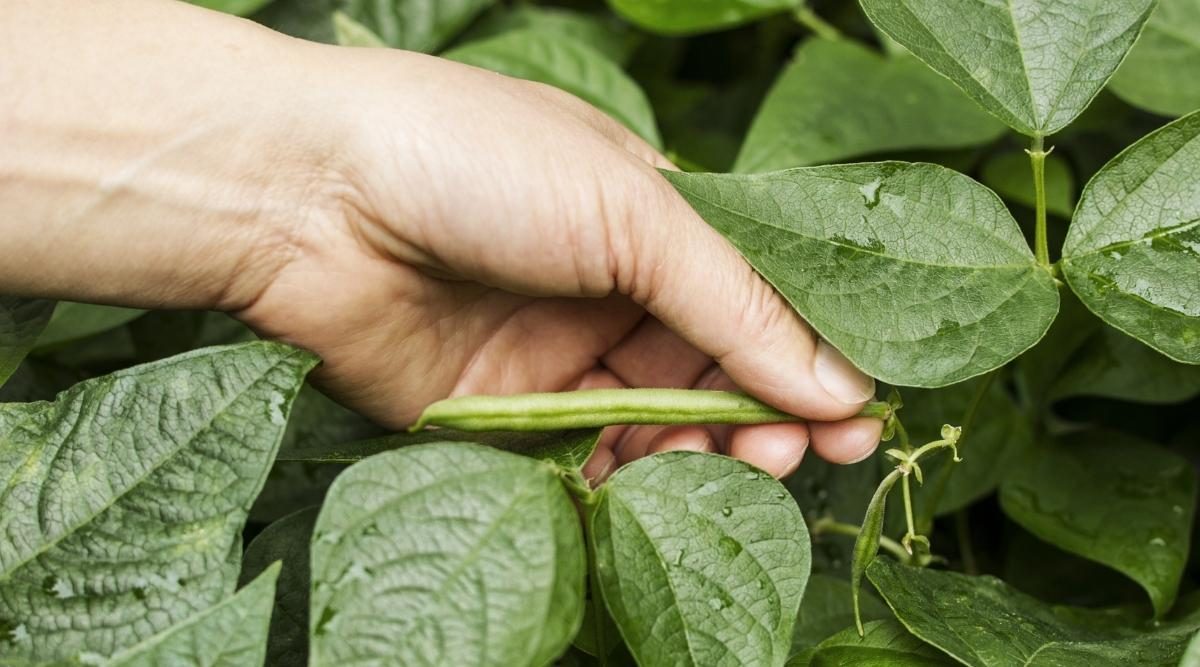Home>Gardening Basics>Getting Started>What Type Of Herbicides Must Be Used On Turf To Kill Existing Weeds And Not Harm The Turf?


Getting Started
What Type Of Herbicides Must Be Used On Turf To Kill Existing Weeds And Not Harm The Turf?
Modified: January 22, 2024
Discover the best herbicides for your turf and learn how to effectively kill existing weeds without damaging your turf. Get started today!
(Many of the links in this article redirect to a specific reviewed product. Your purchase of these products through affiliate links helps to generate commission for Chicagolandgardening.com, at no extra cost. Learn more)
Table of Contents
Introduction
Welcome to the world of turf management, where keeping your lawn lush and healthy is the ultimate goal. However, one of the most common challenges faced by turf managers is dealing with weeds that can invade and mar the beauty of your turf. Luckily, herbicides are powerful tools that can help in effectively eliminating weeds and ensuring the health of your turf.
In order to eradicate weeds without causing harm to the turf, it is important to understand the different types of herbicides available and their specific uses. Selective herbicides target specific types of weeds while leaving the turf unharmed, while non-selective herbicides can be used to eliminate all vegetation in an area.
Choosing the right herbicide for your turf requires careful consideration of factors such as the types of weeds present, the turfgrass variety, the timing of application, and environmental conditions. Additionally, applying herbicides correctly and adhering to best practices is essential to achieving optimal results.
In this guide, we will explore the various types of herbicides suitable for turf management, discuss their selective and non-selective properties, and provide valuable tips for choosing the appropriate herbicides for your specific needs. By the end of this article, you will have a clear understanding of how to effectively use herbicides to eliminate weeds and maintain a vibrant and healthy turf.
Understanding the Different Types of Herbicides
Herbicides are chemical substances specifically designed to control or eliminate undesirable plants, commonly known as weeds. These weed control tools can be classified into two main categories: selective and non-selective herbicides. Understanding the differences between these types is crucial when it comes to effectively managing weeds while preserving the health of your turf.
Selective Herbicides for Turf
Selective herbicides are formulated to target specific types of weeds while minimizing damage to desirable turfgrass species. These herbicides work by selectively inhibiting certain metabolic processes that are specific to the targeted weeds.
One common class of selective herbicides used in turf management is the post-emergence herbicides. These are applied directly to the foliage of actively growing weeds and are effective against broadleaf weeds. The herbicide is absorbed by the leaves and inhibits the weed’s ability to photosynthesize, ultimately leading to its death. Common examples of selective post-emergence herbicides include 2,4-D, dicamba, and mecoprop.
Another class of selective herbicides is the pre-emergence herbicides. These are applied before weed seeds germinate and form a barrier in the soil, preventing weed growth. Pre-emergence herbicides are effective against various grassy weeds such as crabgrass, goosegrass, and foxtail. Common examples of pre-emergence herbicides include dithiopyr, pendimethalin, and prodiamine.
Non-Selective Herbicides for Turf
Non-selective herbicides, on the other hand, are designed to kill or control all vegetation, including both weeds and desirable plants. These herbicides are commonly used in situations where complete vegetation removal is required, such as in non-turf areas, driveways, and walkways.
Glyphosate is one of the most widely used non-selective herbicides. It works by inhibiting a key enzyme involved in plant growth, ultimately leading to the death of the entire plant. Glyphosate is commonly used in “total vegetation control” scenarios, where all plant growth is undesired.
While non-selective herbicides can effectively eliminate weeds, it is important to apply them with caution, as they can cause harm to desired turfgrass if not used appropriately. Protective measures, such as careful application and shielding of nearby turf, should be taken to avoid accidental damage.
Understanding the differences between selective and non-selective herbicides is fundamental to effectively managing weeds and maintaining the health of your turf. By carefully selecting the appropriate herbicide for your specific needs and following proper application techniques, you can keep your turf weed-free and thriving.
Selective Herbicides for Turf
When it comes to maintaining a healthy and weed-free turf, selective herbicides are an invaluable tool. These herbicides are designed to target specific types of weeds while minimizing harm to the surrounding turfgrass. By selectively targeting the unwanted weeds, you can effectively control their growth and preserve the beauty of your turf.
Selective herbicides for turf can be categorized into two main types: post-emergence herbicides and pre-emergence herbicides.
Post-Emergence Herbicides
Post-emergence herbicides are applied directly to the foliage of actively growing weeds. These herbicides are absorbed by the leaves and translocated throughout the plant, ultimately inhibiting its ability to carry out essential metabolic processes.
One of the most common post-emergence herbicides used in turf management is 2,4-D. It effectively targets broadleaf weeds such as dandelions, clover, and plantain. Another widely used selective herbicide is dicamba, which is effective against a variety of broadleaf weeds. Mecoprop is another post-emergence herbicide that targets broadleaf weeds and is often used in combination with 2,4-D or dicamba for enhanced weed control.
When using post-emergence herbicides, timing is crucial. Applying the herbicide when the weeds are actively growing and before they produce seed will yield the best results. It is important to closely follow the manufacturer’s instructions regarding rates and application methods to ensure optimal efficacy.
Pre-Emergence Herbicides
Pre-emergence herbicides are applied before weed seeds germinate and establish themselves in the turf. These herbicides form a barrier in the soil, preventing the germination and growth of weed seeds.
Common pre-emergence herbicides used in turfgrass management include dithiopyr, pendimethalin, and prodiamine. These herbicides are effective against grassy weeds such as crabgrass, goosegrass, and foxtail. They create a protective zone in the soil, preventing weed seeds from successfully germinating and establishing themselves in the turf.
Proper timing is crucial when applying pre-emergence herbicides. They should be applied before the target weeds emerge, typically in early spring or late fall when soil temperatures are within the appropriate range for seed germination. Following label instructions regarding application rates and timing is essential for effective weed control.
When using selective herbicides for turf, it is important to consider that different herbicides have varying efficacy against specific weed species. Additionally, some turfgrass varieties may be more sensitive to certain herbicides than others. Careful consideration of the specific weeds present in your turf, the turfgrass variety, and the climatic conditions will help determine the most suitable selective herbicide for your situation.
By choosing and applying selective herbicides properly, you can effectively control weeds while preserving the health and beauty of your turfgrass. Keep in mind that proper application techniques, following label instructions, and regular monitoring of the turf for weed growth are key elements for successful weed management.
Non-Selective Herbicides for Turf
While selective herbicides are specifically designed to target and eliminate certain types of weeds, there are situations where a more broad-spectrum approach is necessary. Non-selective herbicides are particularly useful when complete vegetation control is required, such as in non-turf areas, driveways, walkways, or other areas where weed growth is undesirable.
Non-selective herbicides are formulated to kill or control all vegetation they come into contact with, including both weeds and desired plants. These herbicides work by interfering with essential metabolic processes in plant cells, leading to their death.
One of the most commonly used non-selective herbicides is glyphosate. Glyphosate is a systemic herbicide that works by inhibiting a key enzyme involved in plant growth. When applied properly, it translocates throughout the plant, killing the entire plant from the roots to the foliage. Glyphosate is effective against a wide range of weeds, including both broadleaf weeds and grassy weeds.
When using non-selective herbicides, it is crucial to apply them with caution to avoid unintended damage to desirable vegetation, such as turfgrass. Shielding or carefully avoiding contact with desirable plants is essential to prevent harm. It is also important to follow the manufacturer’s instructions regarding application rates and precautions to minimize the risk of environmental contamination.
Non-selective herbicides are commonly used in scenarios where complete vegetation removal is desired, such as clearing overgrown areas or preparing bare ground for turfgrass establishment. They can also be used for spot treatment of weeds in turf areas, although care must be taken to avoid contact with desirable grasses.
It is worth mentioning that the persistence of non-selective herbicides can vary. Some formulations break down relatively quickly in the soil, while others can remain active for an extended period of time. Understanding the persistence of the herbicide is important when considering reseeding or establishing new turfgrass in treated areas.
When using non-selective herbicides, it is crucial to follow all safety precautions and guidelines provided by the manufacturer. This includes wearing protective equipment, applying the herbicide in suitable weather conditions, and taking steps to minimize drift to non-target areas.
Non-selective herbicides are powerful tools for controlling weed growth in non-turf areas or when complete vegetation removal is necessary. By using them responsibly and following best practices, you can effectively manage weed issues and maintain a clean and weed-free environment.
Factors to Consider when Choosing Herbicides for Turf
Choosing the right herbicide for your turf requires careful consideration of several factors. Understanding these factors will help ensure that you select the most effective herbicide for your specific weed control needs, while minimizing any potential harm to the turfgrass. Here are some key factors to consider when choosing herbicides for turf:
Type of Weeds
The first factor to consider is the type of weeds you are dealing with. Identifying the specific weed species will help determine which herbicides are most effective against them. Different herbicides have varying efficacy against different types of weeds, so it’s important to choose a herbicide that targets the specific weeds present in your turf.
Turfgrass Variety
Not all herbicides are suitable for every type of turfgrass. Some turfgrass varieties may be more sensitive to certain herbicides, which can result in damage or discoloration. It’s important to choose herbicides that are labeled safe for use on your specific turfgrass variety. Reading and following the herbicide label instructions is crucial to ensure compatibility with your turfgrass.
Timing of Application
The timing of herbicide application plays a significant role in its effectiveness. Certain weeds have specific growth patterns and are more susceptible to herbicides at particular stages of growth. For example, some herbicides are most effective against weeds in the early stages of growth, while others are more effective when applied to mature weeds. Understanding the life cycle of the target weeds and the recommended timing for herbicide application is essential for achieving optimal results.
Environmental Conditions
Environmental conditions, such as temperature, humidity, and rainfall, can impact the efficacy of herbicides. Some herbicides work best when applied under specific weather conditions, while others can be more effective under a wider range of conditions. It’s important to consider the weather forecast and any application restrictions specified on the herbicide label before applying the herbicide.
Persistence and Residual Activity
The persistence and residual activity of a herbicide refers to how long it remains active in the environment. Some herbicides break down relatively quickly, while others can have longer residual effects. The persistence of a herbicide can influence reseeding or establishment of new turfgrass in treated areas. Understanding the persistence of the herbicide will help you plan and make informed decisions regarding reseeding or reestablishment.
By considering these factors and doing proper research, you can choose the most suitable herbicide for your turf. It’s important to carefully read and follow the label instructions for any herbicide you use, as they provide valuable information on application rates, timing, safety precautions, and environmental considerations. When used correctly and in alignment with these factors, herbicides can be effective tools in maintaining a healthy and weed-free turf.
Best Practices for Applying Herbicides on Turf
Applying herbicides on turf requires careful attention to detail and adherence to best practices to ensure effective weed control while minimizing potential damage to the turfgrass. By following these guidelines, you can maximize the efficacy of the herbicide and maintain a healthy and vibrant turf.
Read and Follow Label Instructions
The herbicide label is a valuable source of information and should be carefully read and followed. It provides essential guidance on application rates, timing, safety precautions, and any specific considerations for your particular herbicide. Deviating from label instructions can result in ineffective weed control or unintended turfgrass damage.
Timing is Key
Timing of herbicide application is crucial for optimal results. Apply herbicides when target weeds are actively growing, and before they produce seeds. Timing is dependent on the specific herbicide and the life cycle of the target weeds. Be sure to check the label for recommendations on the appropriate timing for application.
Ensure Proper Environmental Conditions
Environmental conditions can significantly influence the effectiveness of herbicides. Apply herbicides when the weather conditions are suitable, avoiding extremes of temperature or humidity. Consider factors such as wind speed and direction to minimize the risk of drift to non-target areas. It is also important to avoid applying herbicides during periods of heavy rain or when rain is expected shortly after application, as it can wash away the herbicide before it has a chance to take effect.
Carefully Calibrate and Measure
Accurate calibration and measurement of herbicides are important to ensure proper application rates. Use calibrated equipment to deliver the herbicide uniformly across the treated area. Over-application can increase the risk of turfgrass damage, while under-application may result in ineffective weed control. Follow the label instructions for the correct dilution rates and application volumes.
Spot Treatment vs. Broadcast Application
Consider whether spot treatment or broadcast application is more appropriate for your weed control needs. Spot treatment involves applying herbicides only to specific areas where weeds are present, minimizing the potential impact on the surrounding turfgrass. Broadcast application, on the other hand, covers a larger area and is typically used for widespread weed infestations. Careful consideration of the extent and density of weeds will help determine the most suitable application method.
Maintain Safety Precautions
Always prioritize safety when handling and applying herbicides. Wear appropriate protective clothing, including gloves, goggles, and a mask if necessary. Take precautionary measures to minimize contact between the herbicide and your skin, eyes, and respiratory system. Properly store herbicides in a secure location away from children, pets, and food. Dispose of empty containers appropriately and in accordance with local regulations.
By following these best practices, you can ensure effective weed control while minimizing potential harm to your turfgrass. Remember that proper application techniques and adherence to label instructions are crucial for successful herbicide use on turf. Regular monitoring of the turf for weed regrowth and implementing good cultural practices, such as adequate watering and fertilization, will further support the health and longevity of your turf.
Conclusion
Effectively managing weeds while maintaining the health and beauty of your turf requires careful consideration and proper use of herbicides. Understanding the different types of herbicides available, including selective and non-selective options, is key to achieving optimal results.
Selective herbicides target specific types of weeds while minimizing damage to the surrounding turfgrass. Post-emergence herbicides are applied directly to the foliage of actively growing weeds, while pre-emergence herbicides create a barrier in the soil to prevent weed seed germination. It’s important to choose herbicides that are effective against the specific weed species present in your turf, while being safe for use on your particular turfgrass variety.
Non-selective herbicides, on the other hand, are designed to control all vegetation and are commonly used when complete vegetation removal is desirable. However, caution must be taken to avoid contact with desirable plants and proper application techniques should be followed to prevent unintended damage.
When choosing herbicides for your turf, it is important to consider factors such as the types of weeds, the turfgrass variety, the timing of application, environmental conditions, and the persistence of the herbicide. By carefully considering these factors and following best practices, you can maximize the efficacy of the herbicide and minimize any potential harm.
Remember to always read and follow the label instructions provided by the herbicide manufacturer. These instructions provide valuable information regarding application rates, timing, safety precautions, and environmental considerations specific to the herbicide you are using.
Applying herbicides on your turf requires attention to detail, including proper calibration and measurement, accurate timing, and suitable environmental conditions. Additionally, maintaining safety precautions and regularly monitoring your turf for weed growth are essential elements of successful weed management.
By incorporating these best practices and making informed decisions, you can effectively control weeds and maintain a healthy, vibrant, and weed-free turf that you can enjoy for years to come.




